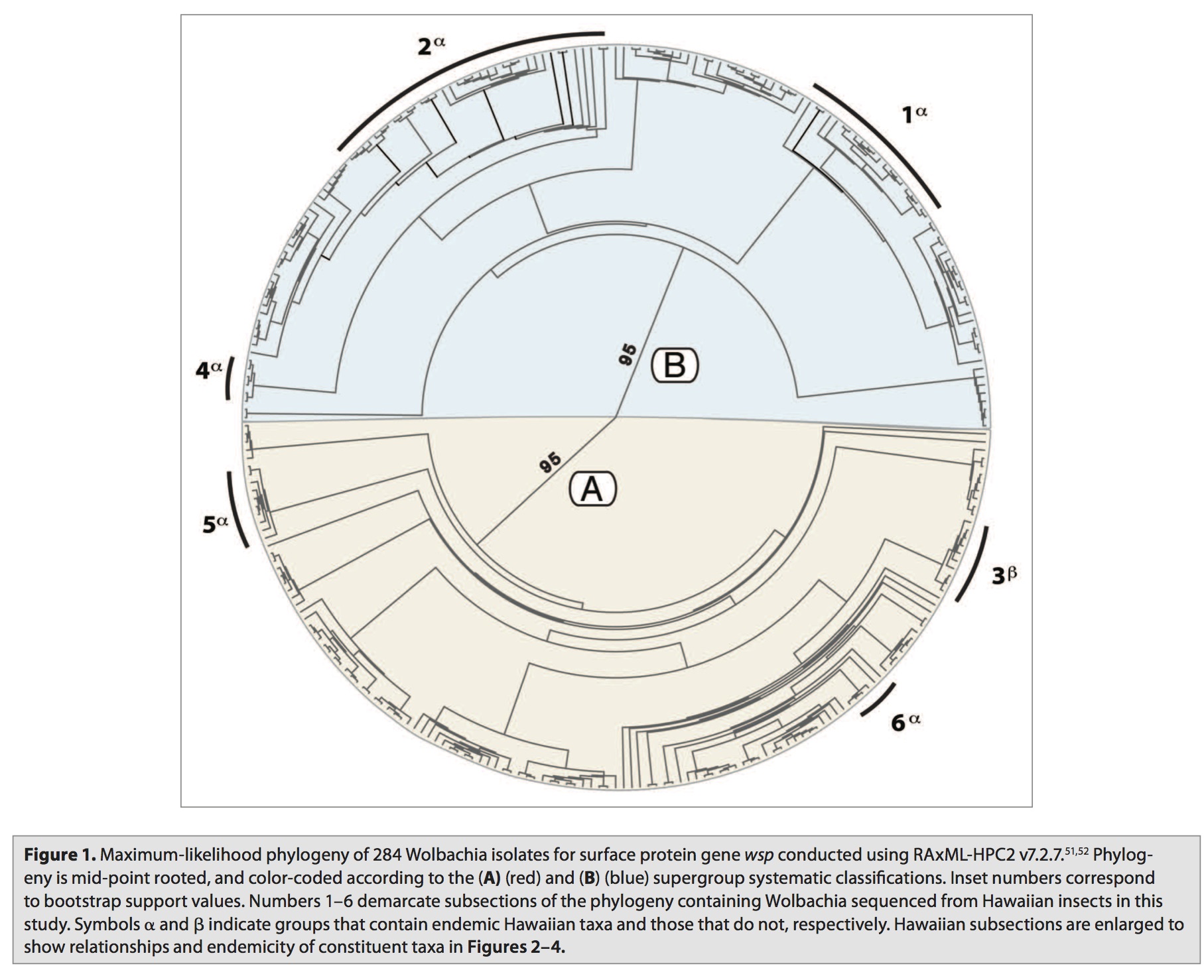Rapid Ohia Death
Our lab has been involved in determining the role of insects in the spread of Rapid Ohia Death (ROD) epidemic on Hawaii Island. Ongoing work by Lisa Keith and colleagues at USDA ARS/PBARC/HDoA/DoFaW have identified the fungal pathogen, Ceratocystis fimbriata, as the causal agent of this disease (a.k.a Ohia or Ceratocystis Wilt Disease). To date, very little is known about the role of insects in spreading this disease. Possible candidates include bark beetles (Coleoptera: Curculionidae: Scolytinae) that are known to carry fungal symbionts. Scolytine hosts also vector various fungal pathogens, including Ceratocystis, that can infect and kill trees. See CTAHR project website here for more details
We have extended work on Ceratocystis pathogen identification, to examine the evolution and biogeography of fungal symbionts in the native and non-native bark beetles on Hawaiian islands. The Hawaiian Archipelago is home to a native radiation of beetles, for which very little is known. Hawaii is also host many non-native bark beetles that have a wide host range and harbor diverse consortia of fungal symbionts. The identities of these symbionts and their role in beetle success in Hawaii is unknown.Wolbachia and Secondary Symbionts in Hawaiian Insects
We are also interested in the spread and evolution of secondary and insect pathogens in Hawaiian insects. To date, we have focused on the prevalence and horizontal transmission of Wolbachia among native and non-native insect taxa. This work has revealed that both native and non-native insects are infected with globally distributed Wolbachia strains. Also, Hawaiian insects are host to several unique strains that have not been identified from elsewhere. Very little is known about how the origins of these strains or their impact on local insects.


Emergence and Disease Epidemiology of Plant Pathogens in Hawaii: BBTV
Through collaboration with Rodrigo Almeida at UC Berkeley, I have been involved in the disease epidemiology of emergent plant pathogenic viruses. Particularly, we were interested in using population genetics and evolutionary principles to understand the emergence and spread of plant diseases across Hawaii. Focusing on Banana Bunchy Top Virus (BBTV), we were able to determine from where it was intrduced to hawaii, and also the tempo and mode of its spread across the archipelago. Molecular data provided insights into the efficacy of eradication efforts, and subsequence reemergence of the disease on the different islands. My lab is devoted to continue working on the role of insect vectors in the emergence and identification of plant diseases in Hawaii.


Recent Projects
Bark Beetle-Fungal Symbioses
This work is just beginning. We are currently rearing and collecting beetle representatives from Ohia trees in infected areas
Wolbachia in Hawaiian Insects
Survey of the diversity of Wolbachia strains in native and non-native Hawaiian insects.
Disease Epidemiology of BBTV
This is an early project aimed at identifying the source of BBTV in Hawaii and the tempo of its spread throughout the islands. We employed population genetics to address these questions